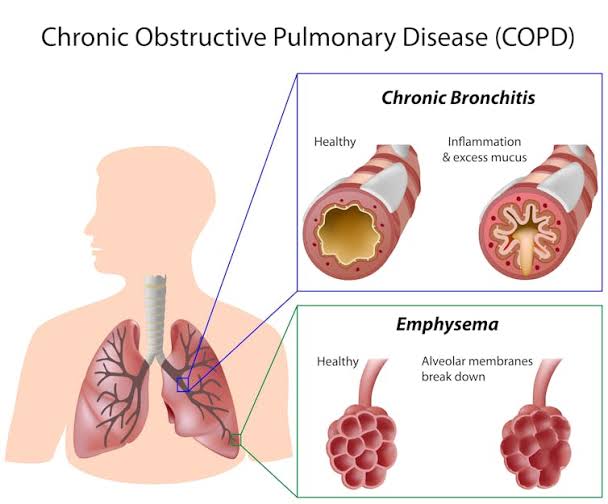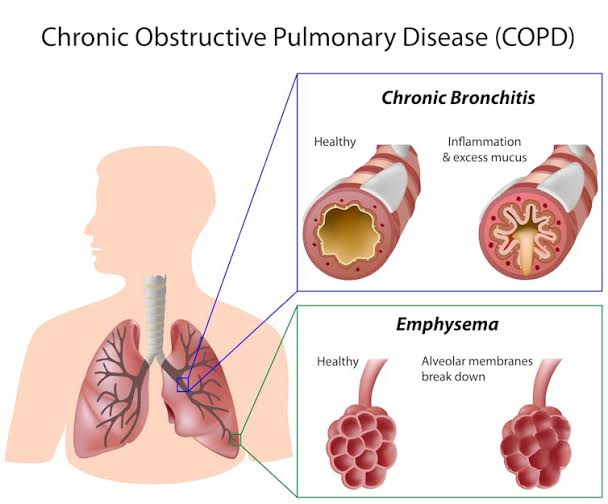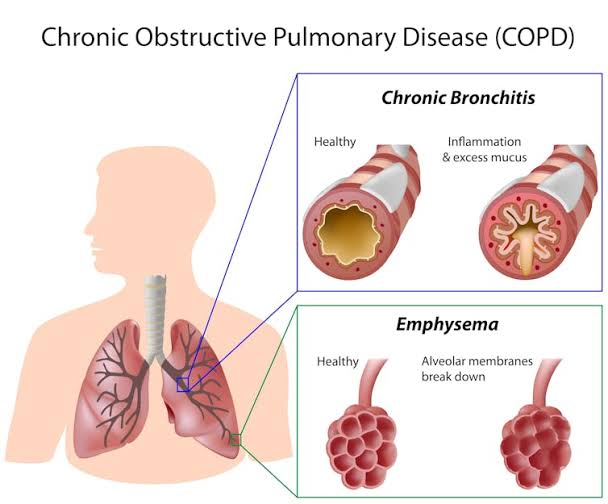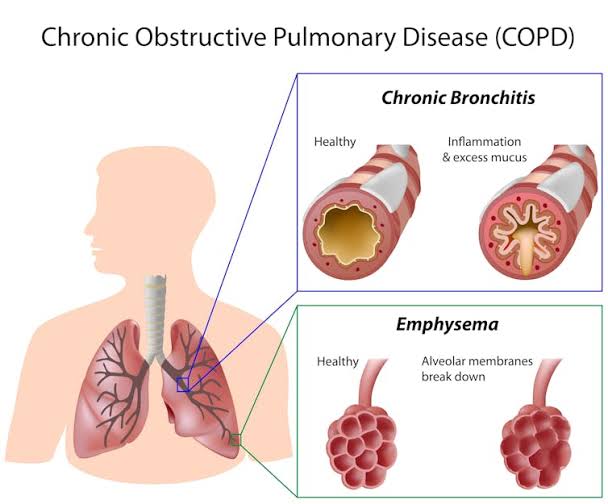Health Desk
Sandeep Dhand Ludhiana
Journalist & Research Analysist
Pulmonary diseases, or lung diseases, are a category of disorders that affect the lungs, the organs that facilitate breathing. They vary widely, from conditions that primarily affect the airways, lung tissues, or blood vessels, to chronic diseases that limit breathing ability. Pulmonary diseases can significantly impact an individual’s quality of life, and in severe cases, they can be life-threatening. This article explores various types of pulmonary diseases, their causes, symptoms, and treatment options.
Types of Pulmonary Diseases
Pulmonary diseases are diverse, and they can be categorized into three main types:
- Airway Diseases
Airway diseases are conditions that affect the airways—the tubes through which air travels to and from the lungs. These conditions include asthma, chronic obstructive pulmonary disease (COPD), and bronchitis. Airways become narrowed or blocked, making breathing more difficult. For example:
Asthma: Asthma causes the airways to become inflamed and produce extra mucus, leading to difficulty in breathing. It is often triggered by allergens, pollution, or stress.
Chronic Obstructive Pulmonary Disease (COPD): COPD is an umbrella term that encompasses emphysema and chronic bronchitis. It often results from smoking and leads to persistent respiratory symptoms and airflow limitation.
Bronchitis: Bronchitis refers to the inflammation of the bronchial tubes, causing coughing, mucus production, and difficulty breathing.
- Lung Tissue Diseases
Lung tissue diseases affect the structure of the lung tissue itself, making it hard for the lungs to function properly and take in oxygen. These diseases can cause scarring or inflammation, leading to stiff lungs. Examples include:

Pulmonary Fibrosis: This condition occurs when the lung tissue becomes scarred, making it difficult for the lungs to expand and contract during breathing.
Sarcoidosis: Sarcoidosis involves the growth of tiny collections of inflammatory cells in the lungs, which can disrupt their normal function.
Interstitial Lung Disease (ILD): ILD is a group of diseases that cause inflammation and scarring of the lung tissue, impairing the lung’s ability to transfer oxygen.
- Pulmonary Vascular Diseases
Pulmonary vascular diseases involve the blood vessels in the lungs. These conditions affect the way blood flows through the lungs, which can result in serious complications. Examples include:
Pulmonary Hypertension: This is high blood pressure in the arteries that supply the lungs, making it harder for the heart to pump blood through them.
Pulmonary Embolism: A pulmonary embolism occurs when a blood clot blocks an artery in the lungs. It can be life-threatening if not treated promptly.
Causes of Pulmonary Diseases
Pulmonary diseases can result from a variety of factors. Some of the most common causes include:
- Smoking
Smoking is a leading cause of many pulmonary diseases, particularly COPD and lung cancer. The harmful chemicals in cigarette smoke can damage lung tissue and make the airways narrower, leading to breathing difficulties. - Environmental Factors
Air pollution, exposure to toxic fumes, and secondhand smoke are environmental factors that can contribute to lung diseases. Workers exposed to asbestos, silica dust, or other harmful substances are at a higher risk of developing pulmonary conditions. - Infections
Viral or bacterial infections can lead to conditions like pneumonia or bronchitis. Respiratory infections, particularly in individuals with weakened immune systems, can sometimes become chronic and lead to long-term lung damage. - Genetics
Some pulmonary diseases are linked to genetic factors. For example, cystic fibrosis is an inherited condition that causes severe damage to the lungs and other organs. - Autoimmune Disorders
Autoimmune conditions, such as rheumatoid arthritis or lupus, can also affect the lungs and lead to pulmonary complications, such as interstitial lung disease.

Symptoms of Pulmonary Diseases
The symptoms of pulmonary diseases can vary depending on the type and severity of the condition. Common symptoms include:
Shortness of Breath: Difficulty breathing, particularly during physical activity, is a hallmark symptom of many lung conditions.
Chronic Cough: A persistent cough that lasts for weeks or months can be an indication of a lung disease, particularly if accompanied by mucus production.
Wheezing: Wheezing, a whistling sound when breathing, is often associated with asthma or airway obstruction.
Chest Pain: Chest discomfort or pain may occur, especially during breathing or coughing.
Fatigue: Difficulty breathing can make physical activity exhausting, leading to fatigue.
Bluish Lips or Fingertips: A bluish tint to the lips or fingertips, known as cyanosis, can occur when the body isn’t getting enough oxygen.
Unintended Weight Loss: Conditions like COPD or lung cancer can lead to weight loss due to decreased appetite or increased energy expenditure from labored breathing.
Diagnosis of Pulmonary Diseases
Diagnosing pulmonary diseases involves a combination of physical examinations, medical history, and specific tests. Common diagnostic tests include:
- Chest X-Ray or CT Scan: Imaging tests help visualize the structure of the lungs and identify any abnormalities such as scarring, inflammation, or tumors.
- Pulmonary Function Tests (PFTs): These tests measure how well the lungs are working. They help determine lung capacity, airflow, and how effectively the lungs deliver oxygen to the blood.
- Blood Tests: Blood tests can measure the levels of oxygen and carbon dioxide, indicating how well the lungs are functioning.
- Bronchoscopy: This procedure involves inserting a thin tube with a camera through the nose or mouth into the airways, allowing doctors to directly visualize the inside of the lungs and take samples if necessary.

Treatment of Pulmonary Diseases
The treatment for pulmonary diseases depends on the specific condition and its severity. Common treatment approaches include:
- Medications
Bronchodilators: These medications relax the muscles around the airways, making breathing easier. They are often used to treat asthma and COPD.
Anti-Inflammatories: Corticosteroids are anti-inflammatory drugs that help reduce swelling in the airways, which is crucial for treating asthma and some interstitial lung diseases.
Antibiotics or Antivirals: If the lung disease is caused by an infection, antibiotics or antiviral medications may be prescribed.
Anticoagulants: Blood thinners are used to treat conditions like pulmonary embolism, where blood clots block the blood vessels in the lungs.
- Oxygen Therapy
For individuals with advanced pulmonary diseases who have low blood oxygen levels, supplemental oxygen may be prescribed. This helps maintain adequate oxygen levels and improves quality of life. - Pulmonary Rehabilitation
Pulmonary rehabilitation is a program that includes exercise training, nutritional counseling, and education about the disease. It helps improve the ability to exercise and manage symptoms, especially for those with chronic conditions like COPD. - Lifestyle Changes
Smoking Cessation: Quitting smoking is one of the most important steps for individuals with or at risk of pulmonary diseases.
Avoiding Pollutants: Avoiding exposure to air pollution, toxic fumes, and other environmental irritants can help reduce symptoms.
Healthy Diet and Exercise: Maintaining a healthy diet and staying physically active can strengthen respiratory muscles and improve lung function.
- Surgery
In some cases, surgery may be necessary. For instance, a lung transplant may be considered for patients with severe lung damage, or a pulmonary embolism may require surgical intervention to remove the clot.

Prevention of Pulmonary Diseases
Preventing pulmonary diseases often involves making healthy lifestyle choices:
Avoid Smoking: Smoking cessation is the most effective way to prevent COPD, lung cancer, and other lung-related issues.
Limit Exposure to Pollutants: Reducing exposure to toxic substances and pollutants can minimize lung damage.
Vaccination: Vaccines for flu and pneumonia can help prevent respiratory infections that could lead to more serious lung diseases.
Healthy Living: A well-balanced diet, regular exercise, and avoiding respiratory irritants can all contribute to maintaining lung health.
Conclusion
Pulmonary diseases encompass a wide range of conditions that affect the airways, lung tissues, and blood vessels in the lungs. Understanding the causes, symptoms, and treatment options is essential for managing these conditions effectively. Early diagnosis, prompt treatment, and lifestyle changes can make a significant difference in the quality of life for individuals living with pulmonary diseases. Maintaining good respiratory health through preventative measures, such as avoiding smoking and reducing exposure to pollutants, can significantly reduce the risk of developing pulmonary diseases.